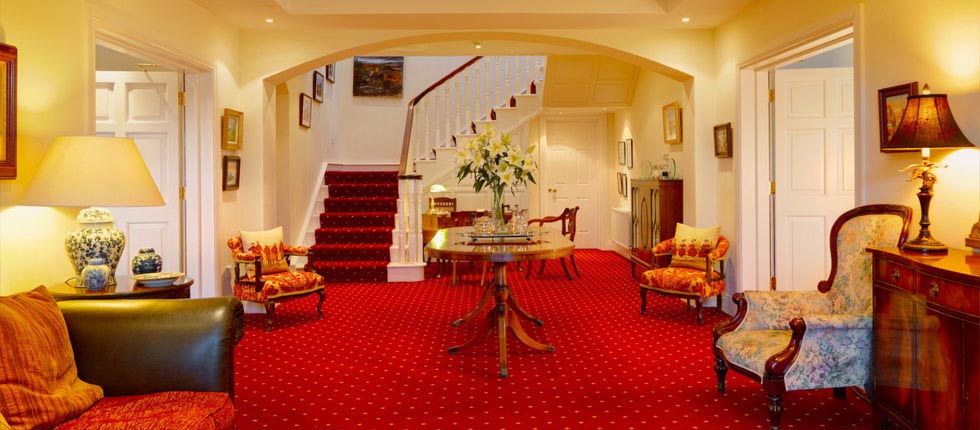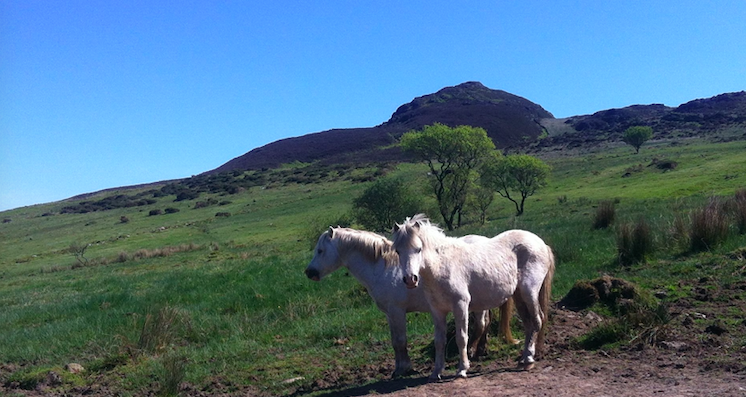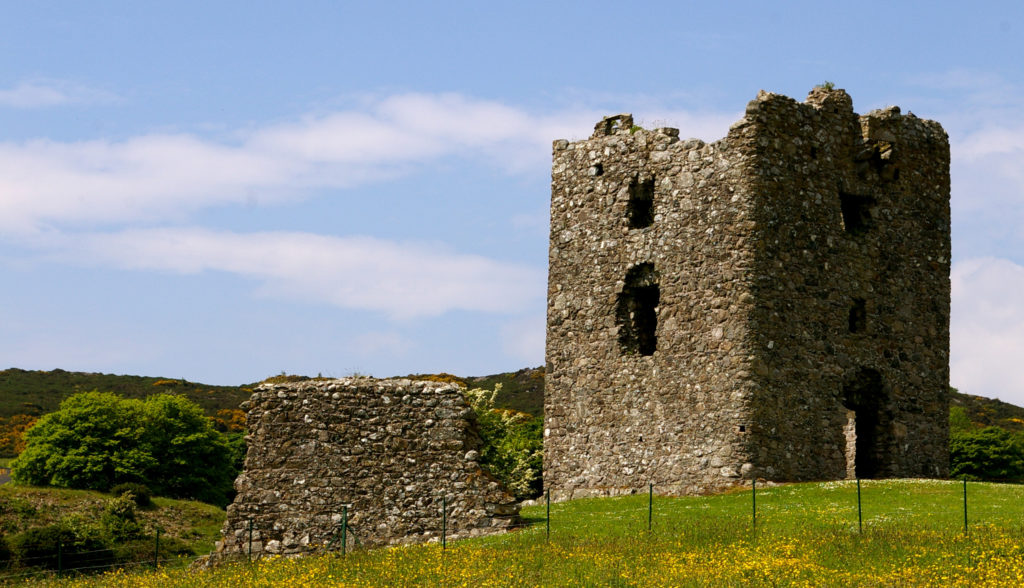MAL ROGERS recommends a few jaunts for your next visit home
Seeing the wood from the trees
NOT so famous as its nearby neighbour Tollymore Forest —with its connections with Game of Thrones, Chronicles of Narnia and Edward Lear — Castlewellan Forest in Co. Down is nonetheless a fascinating place with some grade-A horticultural curios as well as 25-carat views. Castlewellan’s gift to the botanical world is the Cuprocyparis leylandii, or Castlewellan Gold, cultivated today by gardeners across the globe — you can still see the original specimen in the ornamental gardens. But the A-listers don’t stop there — round the faux baronial castle and ornamental lake are giant sequoias, Californian nutmegs towering to the sky, and probably Ireland’s tallest tree, a Douglas fir which local foresters believe tops the Powerscourt (Co. Wicklow) record holder by a couple of feet. Away from the arboretum and formal gardens (both beautiful and rarely, if ever, busy) more rugged woodland stretches up gentle hillsides from which spectacular views across Down’s drumlin countryside to the Mournes.
 LUXURY DIGS Gracious living at the Castlewood House, Dingle
LUXURY DIGS Gracious living at the Castlewood House, DingleSample some gracious living in Dingle
IF ONE of your dreams is to wake up and look out on the beauty of Dingle Bay before enjoying a breakfast that will stop you in your tracks, then the people at Castlewood House can help. This elegant boutique style property is on the shoreline of Dingle Bay while just a 5-minute walk from the many restaurants, artisan craft shops and traditional pubs of the town of Dingle.
Each of the dozen or so bedrooms is individually styled and beautifully appointed with exquisite attention to detail with every room having a marble adorned bathroom with separate walk-in power shower and jacuzzi bath. The elegant antique filled drawing room and warm and inviting dining room each overlook Dingle Bay, a view so beautiful that it tears your heart. Or perhaps that was the whiskey. To quote PG Wodehouse in another context, “it's like dying and going to heaven without the trouble and expense”.
Ah, the breakfasts. You'll want to hear about those breakfasts. These are award-winning, gourmet feasts of dishes such as pears poached in red wine, carmelised oranges, aniseed poached plums. Also incoming: fluffy pancakes with maple syrup, several different omelettes and not forgetting porridge served with whiskey. Everybody knows that in Scotland porridge is served with salt, milk and suffering — but they do things differently in Kerry,
Currently you can have a stay here with some film history thrown in. Castlewood House have teamed up with Maurice Galway of Dingle Film Walks who along with being an experienced walker has over 25 years experience in the film industry.
His loop walk visits the locations of the movies made on the Dingle Peninsula including Ryan’s Daughter, Far and Away and most recently Star Wars: Return of the Jedi.
The overall package includes two nights in a deluxe room at Castlewood House, breakfast each morning, half day film walk experience with Dingle Film Walks, and a gourmet packed lunch.
Cost €630.00 per room – price based on two people sharing
More details here or email [email protected]
 WILD COUNTRYSIDE The Cooley Peninsula — two wild horses look down on the Greenway
WILD COUNTRYSIDE The Cooley Peninsula — two wild horses look down on the GreenwayCycle along the Carlingford Greenway
THE Carlingford Greenway runs from Carlingford Marina to the village of Omeath, snaking its way some 10km down Carlingford Lough. The scenery is dramatic — just across the sea lough the crags of the Mountains of Mourne drop into the sea , while the Cooley Mountains rise on the other. Not to be outdone by the Mournes, the Cooleys sweep down to the sea too.
The visceral nature of Irish history has left the mediaeval village of Carlingford with two castles, a Dominican friary, a 17th century mint, muscular looking harbour, and a handful of fine (well-protected) Georgian buildings — which isn’t bad going for a small village. Two people meeting on a pavement here can cause a traffic jam.
There are pebble beaches all the way along the route — if you want a sandy beach, you can pop back in a million years or so.
It’s massively maritimey — do it at night and you’ll see the navigational buoys and lighthouses flicker green and red across the dark waters. Ethereal stuff.
Bicycles can be hired from Carlingford Greenway Hire here
 GUARDING THE GAP Moyry Castle in Co. Armagh at the Gap of Ulster
GUARDING THE GAP Moyry Castle in Co. Armagh at the Gap of UlsterGo on a castle quest
IRELAND has more castles than you can reasonably shake a pikestaff at — probably more per square mile than any other area on earth, although Wales Scotland and Bavaria all post rival claims. Ireland’s earliest surviving castles are Norman, and none is more impressive in its sheer functionality than Moyry Castle, guarding the Gap of Ulster near Kilnasaggart in Co. Armagh is the well-preserved, and threatening hulk of Moyry Castle. This is the sort of place that makes Castle Dracula look quite friendly.
After fighting his way through the Moyry Pass in 1600, Lord Mountjoy wanted to secure the area, so built this no-nonsense fortification. Put up in something of a hurry, there are few signs of comfort, not even a set of stone steps to service the three storeys – access was by ladder only. And no sign of a chill-out room.
Standing on a rocky outcrop on the eastern slopes of Sleivenabolea, the castle sports a number of musket embrasures – windows for poking your gun out – and a ‘machiolation’, or murder hole from which uninvited guests (of which there were many) would be treated to boiling pitch or similarly unwelcoming drinks.
Surrounded by bucolic meadows and hawthorn hedges, it’s hard to imagine that just over 400 years ago the deafening roar of cannon and musket rent the air.
Nearby is the Kilnasaggart Inscribed Stone, just outside Jonesborough, the oldest Christian field monuments in Ireland one of the oldest Christian monuments in Europe, built in the early 700s.
Learn a bit more about Ulster’s history
MONAGHAN County Museum has celebrated its 50th birthday along with the opening of the relocated museum, now part of the €22 million Peace Campus in the town.
The museum has 50,000 artefacts — all sorts of historical knickknackery.
You’ll get the whole lowdown on the lands hereabouts: the town was originally built on fortified crannógs in early Christian times; more recently a Franciscan Abbey was built (1462), later unhelpfully destroyed by the English. A garrison was established in 1590 after the execution of Hugh Roe McMahon. Within twenty-five years it had become part of the Plantation of Ulster.
The museum tells the story of Monaghan’s linen and lace-making industries, as well as the settlement of the area, and its early, Gaelic history. Pride of place goes to the Cross of Clogher, a celebrated ornate bronze altar cross from the 12th-14th century AD. Although no written record of the cross exists, experts have deduced it probably belonged to some major religious leader of the time. Speaking as not-qualified-at-all historian, I'd agree with that verdict.
Go to church
ST BRIGID’S Cathedral, Kildare, Cathedral started life as a church founded under an oak tree in what is now Kildare town. St Brigid did the business around 480 AD. Over time Kildare developed into a great monastery — which as well as being visited by pilgrims and petitioners from across Ireland and beyond — came to the notice of plunderers and invaders. By the mid-17th century the cathedral was almost entirely in ruins after the vicissitudes of the centuries. But it was replaced in the 19th century by the glorious neo-gothic structure of today. Inside the cathedral an exhibition explains the history of Brigid and Kildare, and a number of mediaeval stone sculptures and tombs give a tremendous feeling of the deeds of the past — it's a terrific atmosphere under the intricate vaulted ceiling and stained glass windows. Outside, in the grounds of the cathedral stands a 12th century high cross, and one of the tallest round towers in Ireland
If you only go to church once a year, make it Kildare Cathedral.
Stop off in the Midlands
THIS REALLY is secret Ireland. Few tourists, on their dash from Dublin to Kerry or West Cork stop off for a wander in these mountains in the Irish midlands; even many Irish people are very hazy as to the whereabouts of the Slieve Blooms. They, in fact, form a border between two equally under-regarded places, Co. Offaly and Co. Laois. Of course this lack of visitors is one of the factors that makes the Slieve Blooms such a worthwhile place to visit.
The Slieve Bloom Way is 48 miles long, and while not particularly mountainous in the grand scheme of things, any section of the Way can be strenuous enough to let you know you’ve been on a hike. The trek will take you through heath and woodland, onto open moorland and eventually bare rock. En route you’ll see deer, hare, wild orchids, wild strawberries and bog cotton. You’ll likely have the place to yourself, and it is only enchanting.
Go to a seisún in Armagh
THE WELCOME Inn in Forkhill, Co. Armagh a rugged pub in a border village, once overlooked directly by a British army observation post.
All quiet now, and the Welcome Inn has returned to being an ordinary village pub. But what arks it out is a world-wide reputation for traditional music - and somewhere which can boast craic levels which I suspect are way above that approved by the Geneva Convention.
Originally called O'Neill's Welcome Inn, after the original owner, Art O'Neill who died some 20 years ago.
But fifty years ago Art and friends founded The Slieve Gullion branch of Comhaltas, and began seisúns. This undoubtedly puts the Welcome Inn in the top half dozen longest running traditional Irish sessions in the world.
The sessions continued right through the hard times this area has known, its reputation attracting some of Ireland's top musicians and singers.
The sessions are still going strong (Tuesday evenings), but be aware: there's no paddywhackeray hereabouts. This is the very backbone of the tradition — the sort of music you listen to when you're not trying to impress anyone at all. But you only have to glance at the Welcome Inn's visitor book and you'll read of satisfied customers from as far afield as Estonia, Bangladesh, South Africa and so on. Even at the very height of the Troubles the reputation of the Welcome Inn spread far and wide.
The seisúns here have endured because the music has attained cult status outside the loop of passing vogues. It also helps that the Welcome Inn is ideally designed for the job, with enough room in the centre of the pub for performers, but sufficient snugs and crannies if you want to take a breather.
The music policy is fairly rigorous, with the best of order called for at all times. The MC for the evening introduces the musicians, the sean nós singers, and the visitors "home from South Australia, so give them a big south Armagh welcome". And of course the storytellers - shenachies are still very big round here. A session night at the Welcome Inn is, quite frankly, an extraordinary cultural and social occasion.
If you’re a real aficionado, you can even stay at the pub — or at least an apartment attached to it — one bedroom, lounge, kitchen.
The host is also the landlady of the bar, and she can even arrange history walking tours of the village available on request.
Take a hike
IRELAND’s Upper Diamond Hill mountain track, a 3.7 route to the top of Binn Ghauire (Diamond Hill) in Connemara, is worth every step of the way. The route, a combination of wooden boardwalk and stony path, rises to almost 1500ft (440m) passing through a Special Area of Conservation. The walkway starts in the village of Letterfrack, Co. Galway and threads through fuchsia-lined fields, passing through Connemara National Park on the way to the summit. From the top you’ll get views right across Connemara, with a particularly spectacular vista south-eastwards to the Twelve Bens.
Diamond Hill is the lowest of the hills in the area, and is a good introduction to the ecology and wildlife in the area, though still prone to sudden mists and rain. So dress properly – remember, so there’s no such thing as bad weather, only bad clothes.
Connemara National Park, managed by Dúchas, is an area of huge natural beauty, with bog, heath and granite covering over 2000 hectares, taking in some of the Twelve Bens range – you could spend an entire month here, let alone a day trip. The mountains Benbaun, Bencullagh, Benbrack and Muckanacht are within the confines of the park, but are a much sterner prospect than Diamond Hill.
There are four purpose-built trails in all.
More details on ireland.com

